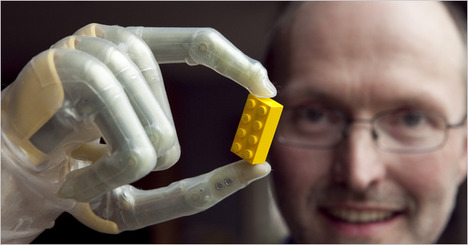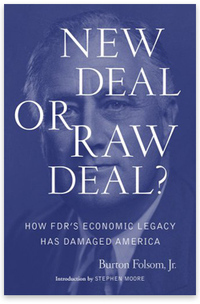(p. 50) Among those damaged was Carl Pharis, the general manager of Pharis Tire and Rubber Company in Newark, Ohio. Pharis employed over one thousand people, mainly in the Newark area. His company grew because, in Pharis’s words, “we would make the best possible rubber tire and sell it at the lowest price consistent with a modest but safe profit.” He and his employees had survived the grim Great Depression years because they had lower prices, a good tire, and solid support in central Ohio from buyers who knew the company because it was local and because it priced its tires lower than the larger firms. As Pharis said, “It is obvious that they cannot make as good a tire as we make and sell it at the price at which we can sell at a profit:”
Then came the NRA with its high fixed prices for tires. As Pharis said, “Since the industry began to formulate a Code under the N. R. A., in June, 1933, we have at all times opposed any form of price-fixing. We believe it to be illegal and we know it to be oppressive.” He added, “We quite understand that, if we were compelled to sell our tires at exactly the same price as they sell their tires, their great national consumer acceptance would soon capture our purchasers and ruin us. Since we have so little of this consumer publicity when compared with them, our only hope is in our ability (p. 51) to make as good or a better tire than they make and to sell it at a less[er] price. . . . ”
Since Pharis and other small companies were no longer allowed to sell tires at discounted rates, Goodyear and Firestone “could go out just as they have gone out,” Pharis noted, “and say to prospective customers that, since they had to pay the same price, it would be wiser if they bought the nationally advertised lines.”
In a nutshell, Pharis put it this way: “The Government deliberately raised our prices up towards the prices at which the big companies wanted to sell, at which they could make a profit, . . . where more easily, with much less loss, they could come down and ‘get us’ and where, bound by N. R. A. decrees, we could not use lower prices, although we could have lowered them and still made a decent profit.”
Pharis was on the verge of closing down and having to lay off all of his one thousand employees. His company, with its low prices and quality tires, could weather the Great Depression, but not the NRA. “If we were asking favors from the Government,” Pharis concluded, “there would be little justice in our complaints. . . . And so, if the big fellows, with their too-heavy investments and high costs of manufacturing and selling, cannot successfully compete with us little fellows without Government aid, they should quit.”
Source:
Folsom, Burton W., Jr. New Deal or Raw Deal? How FDR’s Economic Legacy Has Damaged America. New York: Threshold Editions, 2008.
(Note: ellipses in original.)





